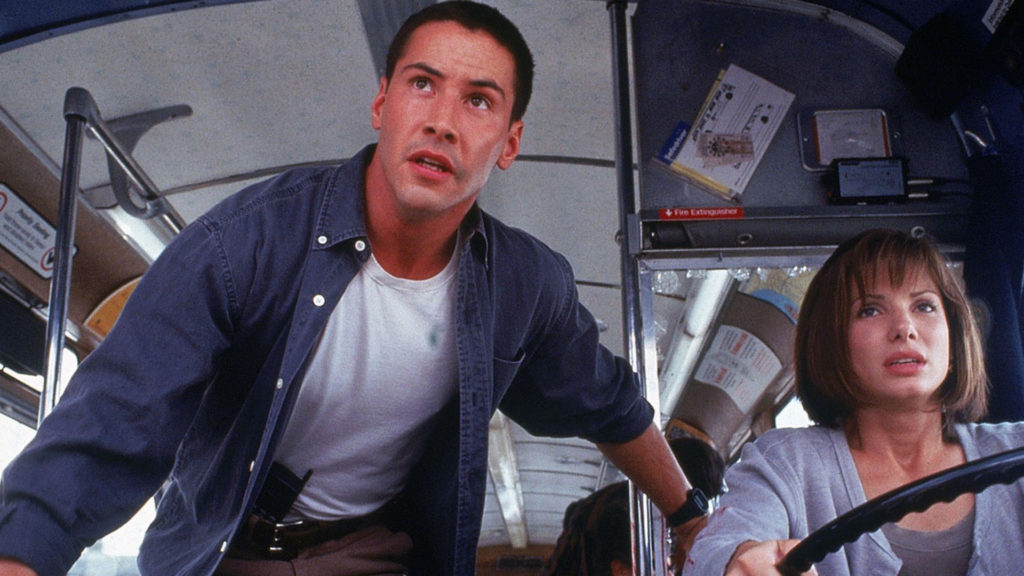
“Is this what they mean by pure cinema?” New Yorker film critic Anthony Lane wrote in his review of “Speed” when the film came out in 1994. “The phrase sometimes hovers around people like Tarkovsky and Ozu, and with good cause, but Hollywood occasionally throws a punch so clean that it breaks through to the same hallowed sanctum.” Surprising praise, perhaps, for a blockbuster represented in poster form by an explosion, a runaway bus, and Keanu Reeves, but watch “Speed” again and you see much more: while it may not have gained intellectual depth with time, it has emerged, over the past couple of decades, as the standout Los Angeles action movie, one that makes fuller use of the city’s distinctive size, shape, and built environment than any other.
That bus plays a part in only one of the three shorter Los Angeles action movies that “Speed’s” nearly two-and-a-half hours comprise. The first, which takes place inside and on top of downtown’s Gas Company Tower, announces itself with a shot of a police car not just driving up to the building but flying up to it, catching at least three feet of air as it roars over the hill in order to deliver the protagonist, Reeves’ young LAPD SWAT officer Jack Traven, and his partner, Jeff Daniels’ Harry Temple. They’ve shown up to rescue an elevator full of office workers, trapped there by a mad bomber threatening to blow it loose and drop them all the way down that still-new high-rise’s 52-story height (established by the opening credit sequence, a long upward climb through a model of its elevator shaft) unless he gets three million dollars in cash.
Traven and Temple ascend to the rooftop, finding a crane to hook onto the elevator car in order to keep it from falling — temporarily, at least, as a well-constructed action movie demands that the solution to each crisis generate a crisis of its own. But when they get up there, we see Los Angeles’ seemingly endless cityscape stretch out below them, a smoggy horizontality of background that contrasts with the glossy, angular, Skidmore-Owings-and-Merrill verticality of the immediate setting. Though remarkably little about “Speed” dates it aesthetically, especially by fad-responsive Hollywood standards, a keen-eyed Los Angeles historian could, going by the amount of smog not yet cleared up and buildings not yet built, pin down almost the exact month of production from these shots alone.
Read the whole thing at KCET. See also my City in Cinema video essay on the movie.